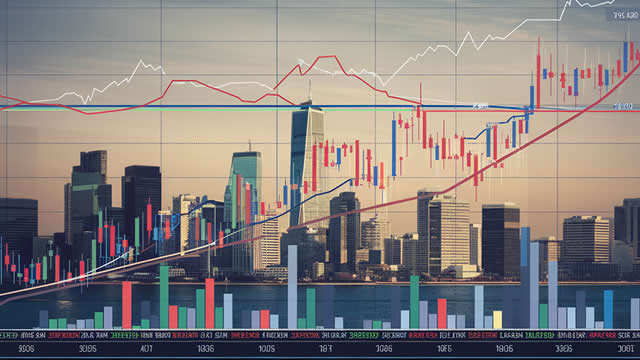The US Dollar’s Resilience Amidst Tariff Talks, Rate Cuts, and Hawkish Fed Minutes
The US dollar has been showing signs of resilience in the face of several economic developments that could typically weaken it. Despite the ongoing tariff talks between the US and China, rate cuts in Australia and New Zealand, and hawkish Federal Reserve (Fed) minutes, the greenback has given back some of its recent losses and is consolidating near the 100-day moving average (DMA).
Tariff Talks
Tensions between the world’s two largest economies have been escalating for some time now, with both sides imposing tariffs on each other’s goods. These tariffs have the potential to disrupt global trade flows and negatively impact economic growth. However, the US dollar’s reaction to this development has been limited, with investors focusing on the underlying economic fundamentals.
Rate Cuts Down Under
The Reserve Bank of Australia (RBA) and the Reserve Bank of New Zealand (RBNZ) both cut their interest rates in August, citing weak inflation and economic growth. The RBA lowered its benchmark rate by 25 basis points to a record low of 1.0%, while the RBNZ reduced its rate by 50 basis points to a record low of 1.0%. These rate cuts were widely expected, but they still weaken the Australian and New Zealand dollars against the US dollar.
Hawkish Fed Minutes
The latest Fed minutes from the July meeting revealed that officials are inclined to keep interest rates unchanged until they see ‘further progress on inflation before making additional adjustments’. This hawkish tone from the Fed, along with the strong US economic data, has boosted the US dollar. The minutes also suggested that the Fed is in no rush to cut rates, which further bolstered the greenback.
Impact on Individuals
For individuals holding US dollars, the resilience of the currency could be good news. A stronger US dollar makes US-denominated assets more attractive to foreign investors, which could lead to increased demand for those assets. This, in turn, could push up their prices and provide a boost to investors’ portfolios.
- Travelers going abroad may find that their US dollars buy more foreign currency.
- Importers may face higher costs due to a stronger US dollar.
- Exporters may benefit from a stronger US dollar as it makes their goods more competitive in foreign markets.
Impact on the World
The resilience of the US dollar could have far-reaching implications for the global economy. A stronger US dollar makes US exports more expensive for foreign buyers, which could negatively impact US companies that rely on exports. It could also make it more difficult for emerging markets to service their debt, as the cost of servicing that debt in US dollars becomes more expensive.
- Emerging markets with large US dollar-denominated debt could face increased pressure to devalue their currencies to make their debt more affordable.
- The European Central Bank (ECB) and the Bank of Japan (BOJ) could be forced to ease monetary policy further to compete with the US dollar.
- Companies that rely on imports could face higher costs, which could lead to increased inflation and lower profitability.
Conclusion
The US dollar’s resilience in the face of tariff talks, rate cuts, and hawkish Fed minutes is a testament to the strength of the US economy. While these developments could typically weaken the currency, investors are focusing on the underlying economic fundamentals. The impact of a stronger US dollar on individuals and the global economy could be significant, with potential benefits and challenges for both.
For individuals, a stronger US dollar could make US-denominated assets more attractive and provide a boost to their portfolios. However, travelers may find that their US dollars buy less foreign currency, while importers could face higher costs. Exporters, on the other hand, could benefit from a stronger US dollar as their goods become more competitive in foreign markets.
For the world, a stronger US dollar could have far-reaching implications. Emerging markets with large US dollar-denominated debt could face increased pressure to devalue their currencies to make that debt more affordable. The ECB and the BOJ could be forced to ease monetary policy further to compete with the US dollar. Companies that rely on imports could face higher costs, which could lead to increased inflation and lower profitability.
Overall, the US dollar’s resilience is a reminder of the importance of focusing on the underlying economic fundamentals when making investment decisions. While external developments can impact the currency, the strength of the US economy remains a key driver of its value.





